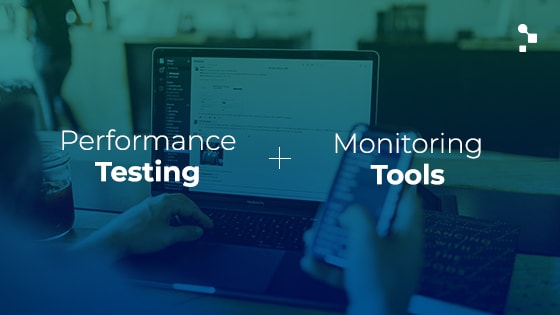TestProject has been instrumental in automating the testing of large technology developments over the past few years. Tricentis announced that this free low-code test automation platform will no longer be available. How can companies make the transition successful? Sofia Palamarchuk, CEO of Apptim and Director at Abstracta, reveals this and much more in this article.
TestProject will soon no longer be available and it is important that companies are prepared for this. Acquired by Tricentis in 2019, on March 31, 2023, all existing accounts will be deactivated, in addition to revoking access to the platform.
“The extensive work required to maintain and upgrade the platform has helped drive the company’s decision to streamline its product offering and focus resources on Tricentis Testim, a SaaS-based, AI-powered test automation tool for custom web apps,” they explained on their official website.
TestProject is a 100% free tool that provides many features in addition to test automation in mobile and web apps, such as access to emulators or browsers to run the tests, use of local devices or third-party cloud, and export of tests to code, among other things.
As a result of Artificial Intelligence, the platform made the tests more stable, maintainable, and robust, both in Web and Mobile.
In this regard, the leader of Abstracta’s Test Automation Hub, Matías Fornara, explained: “In each test run, we gain information to create a model that allows predicting which elements are less likely to fail, and thus modify it. It also allows us to have different options for further testing if they fail during the run. In short, it generates a list of backup selectors in case the primary fails.”
It was one of the first low code platforms for mobile apps that achieved an intelligent record & playback approach. This allowed us to record a test on one device, and have the same test run correctly on different devices.
An example of this can be when choosing an element on an app screen to perform an action on, be it a click, input text, or other action, the tool automatically tests different options to identify the element. This is usually one of the biggest advantages of AI-enabled automation testing tools: helping to make automation testing “smarter,” and therefore more efficient.
“The fact that it is a free tool made it possible to build a fairly large community that not only answered questions in the forums but also added functionalities through add-ons. Another great differential was that thanks to the fact that it works with agents, it allows automating iOS tests from a Windows machine, which in Appium, for example, requires setting up a completely distinct environment,” pointed out Federico Martínez, QE Lead at Abstracta.
Low Code Automation
Low code test automation tools enable people without programming and coding knowledge to automate software testing in web,desktop, and mobile applications quickly and efficiently.
This greatly impacts the industry: it enables more teams to use automation testing as part of their strategy, with great benefits for regression and reliability testing, such as speeding up processes and reducing costs.
In the current context of digital transformation, in which most of humanity’s activities are mediated by technologies, developers are under increasing pressure to release new versions of the systems they work on faster and with higher quality.
The ‘Digital 2022 April Global Statshot’ report by DataReportal, published in collaboration with We Are Social and Hootsuite, revealed that “more than 5 billion people” use the internet worldwide.
“This impressive figure marks another important milestone in our journey towards universal Internet accessibility and means that 63% of the world’s total population is now online,” they stressed from We Are Social.
On the other hand, the “State of Mobile 2023” report by Data.ai revealed that mobile applications are being used more and more every day: in 2022, 485 thousand apps were downloaded per minute, 11% more than the previous year; and daily usage per user was 5 hours, ⅓ of waking time.
Thanks to continuous testing and low code automation, software development process and releases can be performed faster and more efficiently, while keeping system performance and user experience under control.
Automated Tests Transition


Since TestProject users will no longer be able to access their accounts, they need to export their tests to other formats in case they are required to use them in other tools.
On this path, it is important to see what integrations were already in place, and evaluate whether the tool to which you want to migrate allows you to have those integrations or if it is not necessary to have them in the new solution, as part of your testing process.
“It is a good time to rethink what we are covering in each layer of the test automation pyramid and, since we are going to migrate, do it intelligently and invest efforts in the right places, such as gaining test coverage, at the API level and minimizing UI cases,” Matias stated.
“If a user has tests inmobile and web, it is important to understand if they are going to want to have 2 different repositories and what conventions are going to be used. In the case of mobile, what devices and operating systems are going to be covered, for which it is important to review usage statistics in the different app stores,” he continued.
According to Federico, companies that had their automated tests created and running with TestProject will be looking to keep it running, and the trend will be to replace it with other low-code tools.
“It’s a good opportunity for other low code tools to ‘come out and show off’, and be compared with TestProject to provide solutions,” he emphasized.
What elements should users consider when exporting their test cases?
Matias: It is important to think of a way to prioritize the test cases to have those that bring the most value to the business ready or from the technical point of view.
In addition, users should consider their teams’ skills and where they want to invest their efforts, whether to train them in scalable open-source platforms or invest less in training and assume the costs of a licensed tool.
Federico: The same considerations should be taken into account when performing a migration, whether it is a new technology, a tool that is better suited to our needs, etc. In this case, the ideal is to come up with a strategy that best suits the current reality of the project.
To do this, it is necessary to take into account several options, which will depend on the new tool selected if it includes some kind of “automatic migration”, or if it is required to do it manually.
In addition, you need to look for patterns in the test cases created and use them as a basis to facilitate the migration.
That being said, it is possible that none of them are free from having to re-adjust parameterization, result export, or specific validations. Nevertheless, it is a good instance to review what and how you were testing, and make improvements.
What low-code test automation tools can be evaluated when migrating tests?
There are several low code tools that can be used, both for automated web testing, mobile, or APIs. Each testing team should evaluate multiple tools and test scenarios with the aim of deciding which tool suits their platform and needs, such as the team’s technical knowledge, budget, training time, etc.
Some well-known low code automation platforms that can be considered are Testim, Mabl, and Functionize. Testim extended its web capabilities and now also supports automated testing on Android and iOS mobiles.
We share a complete list of low code automation platforms in this article.
It is also possible to use open source tools, which are not low code, but for several teams may be the option of choice, such as Selenium, Playwright, and Webdriver.Io for web, and Appium, or Maestro for mobile.
Which steps should TestProject users take with their test cases, as part of their testing process?


According to Tricentis, all test cases must be transitioned to an alternative platform by March 31, 2023, through one of the following options:
– Export to code (Java, C#, Python).
– Export to a TestProject YAML format.
– Export as a test document (Excel).
– Connect to GitHub using GitHub integration and sync all tests to repositories (will be synced as YAMLs as well)
The company explains that while run reports will no longer be accessible to edit, view, or run after March 31 for users who have integrated Tricentis qTest and TestProject, qTest test cases will remain after TestProject has closed.
Tricentis also offers a free community edition of Testim, as well as paid versions of the product. Until March 31, they are offering a discount on Tricentis Testim for one year to ease the transition.
Looking to go beyond manual testing and get started with low code test automation?
We are quality partners! Check our Test Automation Services and boost your ROI hand in hand with our automation engineers by enhancing quality assurance, test creation, testing processes, and test efficiency and maintainability, impacting the entire development lifecycle.
Contact us to discuss how we can help you grow your business.


Tags In


Sofía Palamarchuk, Co-CEO at Abstracta
Related Posts
Quality Sense Podcast: Oren Rubin – Web Test Automation Challenges
Looking at some of the challenges of test automaton and how to pick the best tools and infrastructure In today’s Quality Sense episode, Federico Toledo sits down for a chat with the founder and CEO of Testim, Oren Rubin, an Israeli entrepreneur who has over…
14 Best Performance Testing Tools & APM Solutions
With all of the free and enterprise tools available for performance testing, there’s no excuse for having a system failure MAY 2020 UPDATE – We’ve added some more tools to our original list: Apptim and Artillery 🙂 Performance tests reveal how a system behaves and…
Search
Contents








